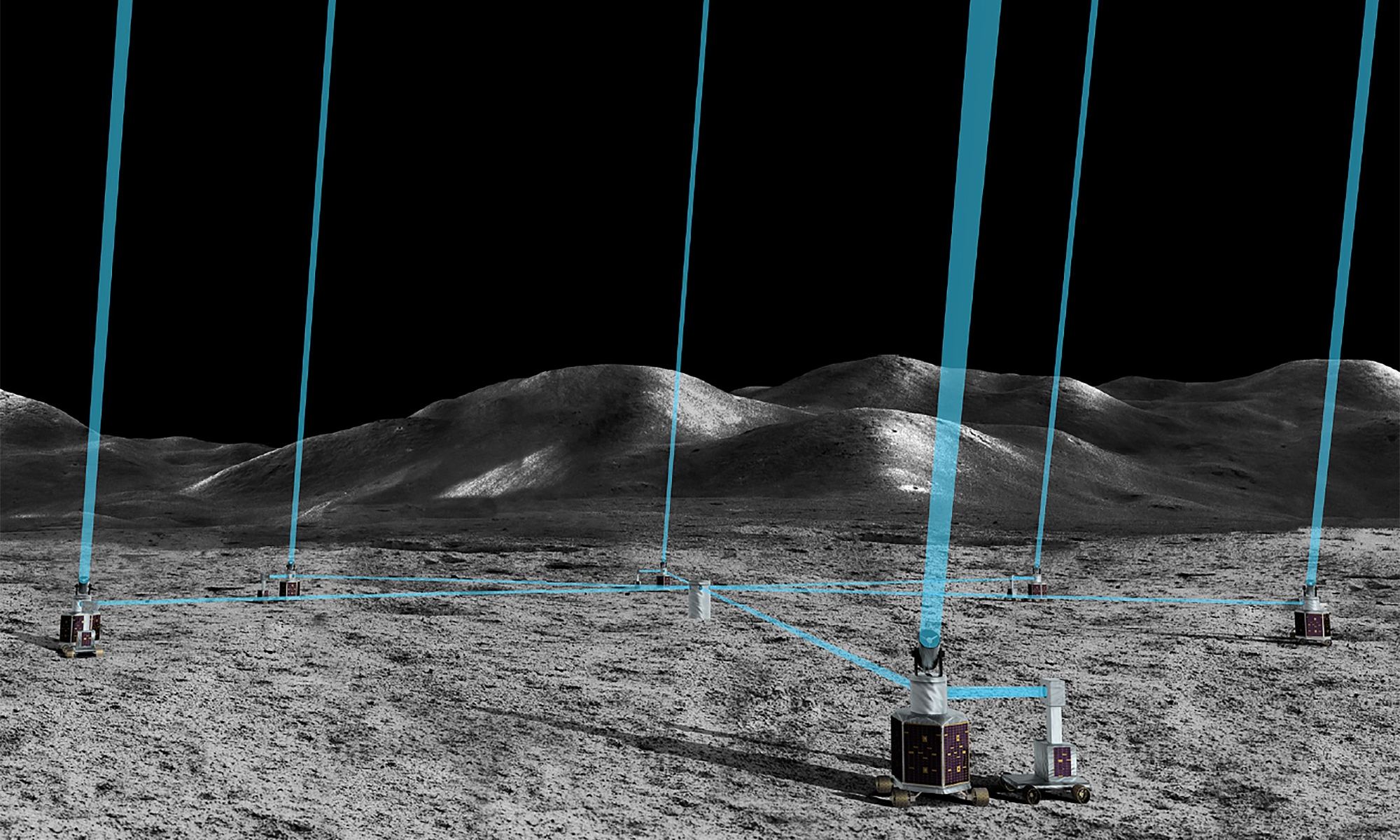As part of the Artemis Program, NASA intends to establish all the necessary infrastructure to create a “sustained program of lunar exploration and development.” This includes the Lunar Gateway, an orbiting habitat that will enable regular trips to and from the surface, and the Artemis Base Camp, which will permit astronauts to remain there for up to two months. Multiple space agencies are also planning on creating facilities that will take advantage of the “quiet nature” of the lunar environment, which includes high-resolution telescopes.
As part of this year’s NASA Innovative Advance Concepts (NIAC) Program, a team from NASA’s Goddard Space Flight Center has proposed a design for a lunar Long-Baseline Optical Imaging Interferometer (LBI) for imaging at visible and ultraviolet wavelengths. Known as the Artemis-enabled Stellar Imager (AeSI), this proposed array of multiple telescopes was selected for Phase I development. With a little luck, the AeSI array could be operating on the far side of the Moon, taking detailed images of stellar surfaces and their environments.
The proposal was made by Kenneth Carpenter and his colleagues at NASA Goddard Space Flight Center (GSFC). Carpenter is the Hubble Operations Project Scientist at GSFC and the ground system scientist for the Nancy Grace Roman Space Telescope (RST). As they note in their proposal, NASA’s return to the Moon offers several significant opportunities for him-impact scientific research. Not the least of these is the potential for creating observatories that take advantage of the “radio quiet” environment and extended periods of darkness on the far side of the Moon.

Due to the tidally locked nature of its orbit, where one side of the Moon is always facing toward Earth, the Moon’s day/night cycle lasts for 14 days. This means a “lunar day” consists of two weeks of continuous sunlight, while a lunar night consists of two weeks of continuous darkness. At the same time, the Moon’s airless environment means that any observations by optical telescopes will not be subject to atmospheric interference. This makes the far side of the Moon a pristine environment for conducting high-resolution interferometric imaging, a method where multiple telescopes collect light to look for patterns of interference.
Astronomers extract data from these patterns to create a detailed picture of celestial objects that are difficult to resolve with conventional telescopes. This same technique allowed the Event Horizon Telescope (EHT), a global network of radio telescopes, to acquire the first image of a black hole ever taken. According to the team, a lunar interferometry array has immense scientific potential and could be built incrementally to limit construction costs:
“This can resolve the surfaces of stars, probe the inner accretion disks surrounding nascent stars and black holes, and begin the technical journey towards resolving surface features and weather patterns on the nearest exoplanets. A fully developed facility will be large and expensive, but it need not start that way. The technologies can be developed and tested with 2 or 3 small telescopes on short baselines. Once the technology is developed, baselines can be lengthened, larger telescopes can be inserted, and the number of telescopes can be increased. Each of these upgrades can be accomplished with minimal disruption to the rest of the system.”
Despite these advantages, the team notes how previous studies on interferometers in space concentrated on designs for free-flying arrays. This was largely due to the 2003-2005 NASA Vision Missions Studies that examined the trade-offs between free-flying space concepts and kilometer-sized interferometers built on the lunar surface. The study concluded that it was better to pursue space-based free-flyers, given the absence of pre-existing human infrastructure on the lunar surface that could provide power and regular maintenance.

However, with the Artemis Program, Carpenter and his team argue that this situation is now changing. With the completion of surface habitats, transportation, drilling, and power facilities planned for the coming years, now is a good time to investigate the possibility of building interferometers on the lunar surface. “Our study of a lunar surface-based interferometer will be a huge step forward to larger arrays on both the moon and free-flying in space, over a wide variety of wavelengths and science topics,” they write. “It will determine, given the current and anticipated state of our space technology and human exploration plans, whether it is better to pursue designs for the lunar surface or for deep space.”
They further envision that a lunar interferometer will lead to advancements in astrophysics, like the study of stellar magnetic activity, the nuclei of active galaxies, and the dynamics of cosmological phenomena on many scales. The design and construction of such a facility will address key engineering concerns, like the best way to incorporate variable-length optical lines, the best configurations for the telescopes, and the optimal mirror size for meeting both technical and scientific goals. They also hope to create a plan for maintaining and expanding the facility over time using a mix of human and robotic support.
Beyond that, the anticipated benefits include technical advances that will enable a UV-optical interferometer and space-based missions capable of imaging black holes (similar to the EHT), searching for biosignatures, and directly imaging rocky exoplanets around other stars. Carpenter and his colleagues also anticipate that the creation of a major facility on the Moon, in conjunction with the Artemis Program’s human exploration goals, will generate tremendous public interest and engagement:
“Finally, this effort will make people dream again – and remember that we can do great things, even in [the] face of difficult times. Our study will help keep the focus on the grandeur of the Universe and what humans can do if they work hard together. Our project will excite generations of future Science, Technology, Engineering, Art, and Mathematics (STEAM) workers, who will be inspired by this bold vision.”
Further Reading: NASA

